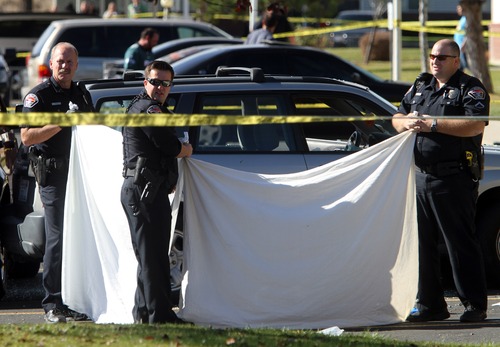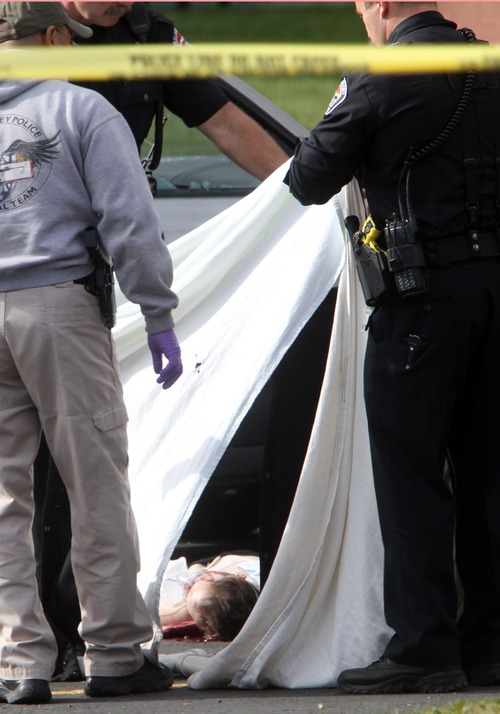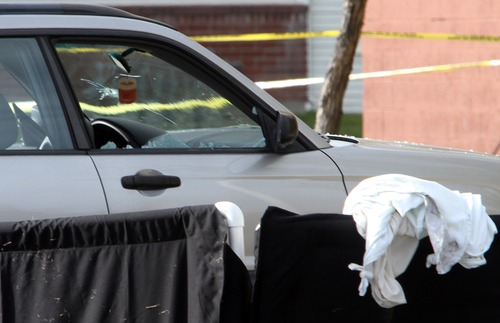This is an archived article that was published on sltrib.com in 2012, and information in the article may be outdated. It is provided only for personal research purposes and may not be reprinted.
Danielle Willard, a 21-year-old recovering drug addict living in Utah, died after being shot in the head twice by two plainclothes police detectives in West Valley City. Since her death on Nov. 2, that sliver of facts is all that her family knows.
Willard's mother, Melissa Kennedy, brought her daughter's ashes home with her to Vancouver, Wash., still not knowing the central question behind her daughter's death.
"It's frustrating as heck," Kennedy said. "Can't they at least tell us why they pulled the trigger?"
That question is driving a weeks-long investigation conducted by the Salt Lake County District Attorney's Office and the West Valley City Police Department. When it is finished, the district attorney will decide whether the officers who shot Willard were justified.
Although there has been a significant drop this year, the number of officer-involved shootings in Salt Lake County in recent years has prompted many in the law enforcement community to seek some changes, especially in how the shootings are investigated.
Salt Lake County District Attorney Sim Gill has floated the idea of an independent task force composed of investigators from multiple agencies.
"Of course you don't want to have any [police shootings], but you cannot bury your head in the sand and not acknowledge that these are dangerous situations," Gill said.
At present, when an officer fires a weapon in the line of duty or uses any other type of deadly force against someone, a set of protocols ignites parallel investigations. First, the district attorney's office heads a criminal investigation to learn if an officer committed a crime.
Simultaneously, that officer's employer, the police agency, conducts an internal probe. Similar rules exist around the state, but what makes Salt Lake County different is that the police agency involved in an officer shooting has the freedom to cross the border between the two investigations. Along with conducting its own internal-affairs probe, an officer's agency is an active participant in the criminal side as well.
Salt Lake City Police Chief Chris Burbank said he welcomes changing the investigation process for the sake of transparency but still has some reservations. So far, it's been difficult deciding on a set of rules pleasing everyone.
"It hasn't quite evolved to where it needs to be yet," he said.
Burbank doesn't believe barring his department from investigating one of its own would serve the investigation well, since his department is the agency with the most investigative resources in the county. "There's some value with bringing in a lot of resources and a lot of experience," Burbank said.
But the current model of letting an involved agency cross the line between a criminal investigation and one for internal affairs makes police officers uncomfortable, according to Brent Jex, president of the Utah chapter of the Fraternal Order of Police.
In the district attorney's investigation, the officer involved in a shooting has Miranda rights just like any other person questioned in a criminal investigation, but as an employee who is the subject of an internal affairs investigation, that same officer can be compelled by his or her bosses to answer questions.
"We want to ensure that the officer's rights are not being violated," said Jex, who is an officer with the West Jordan Police Department.
Jex also has reservations about the district attorney's office playing the dual role of investigating a shooting and deciding whether it's justified.
"It'd kind of be like me approving my own search warrant," he said.
Jex said a better solution would be to have the Attorney General's Office, a state-level agency, make the decision of whether a shooting is justified, especially in cases where the District Attorney's Office is involved in the initial investigation.
Gill noted that some changes have been made already. Gill's rulings are published on the district attorney's website and come with detailed notes about the investigation that led to his decision, replacing the practice of simply issuing a short statement and leaving the investigation's details outside of public view. Gill also provided a free training conference for 300 officers in Salt Lake County that focused on the psychology behind officer-involved shootings. He hopes to have three more such conferences in the next three years. Gill credits those changes for a substantial drop in officer-involved shootings in the county, from 18 in 2011 to five so far in 2012.
Elsewhere in the state, smaller counties have settled on a model that teams investigators from the county attorney's office and an outside police agency. For example, the Millard County Sheriff's Office had Utah County investigators examine the October shooting of a man by a Millard County deputy.
That model works the best for Craig Webb, the bureau chief of the Davis County Attorney's Bureau of Investigations. A clear set of rules that everyone agrees upon makes these investigations more effective and safer for everyone involved, Webb said, and he speaks from experience. In 2003, when he was an officer for Woods Cross police, Webb shot and killed a suspect. Investigators later determined that the unarmed Russell Lynn Stewart charged at Webb and that the shooting was justified.
When he was investigated after the shooting, a lack of clear boundaries between his employers and those who were investigating him made Webb question whether he'd have a job at the end of it, he said.
"It's terrifying," he said. "They teach you how to use your gun, but they don't tell you how to deal with it after," he said.
According to Davis County's rules, the agency involved in the shooting is not allowed to have anything to do with the investigation. Generally, a section chief from the county attorney's office and a lead agent from an outside police agency work together. That makes things a little easier on officers, he said, but it's also important for the public.
"We want the public's trust," Webb said. "We need the public's trust."
Twitter: @KimballBennion









